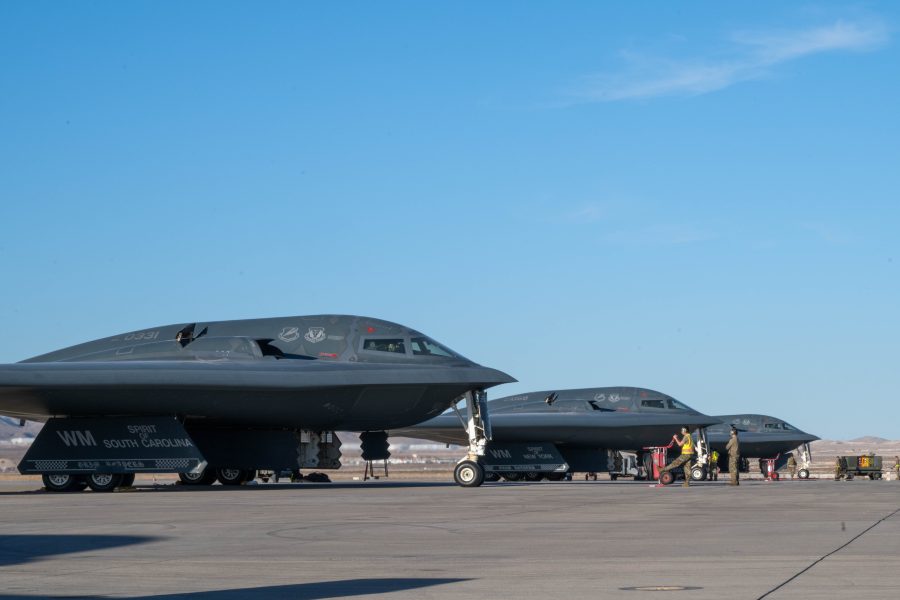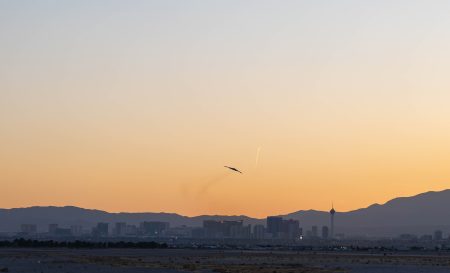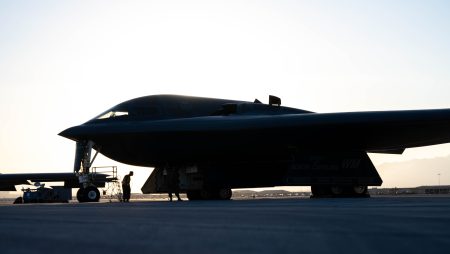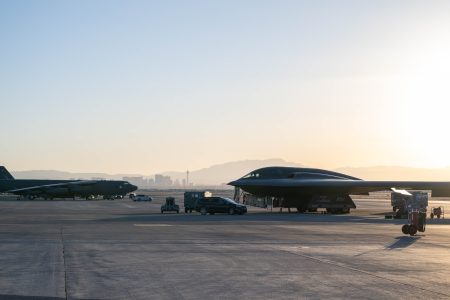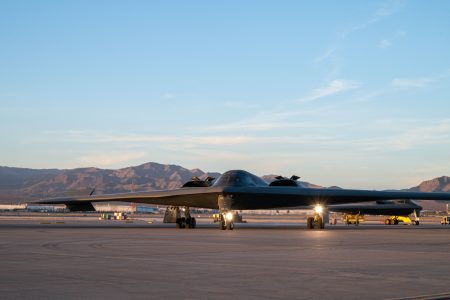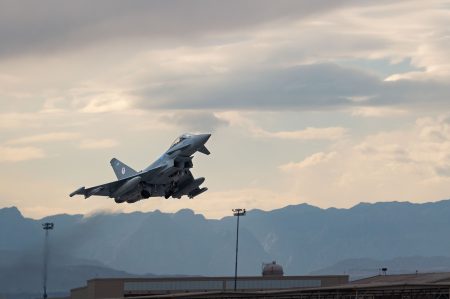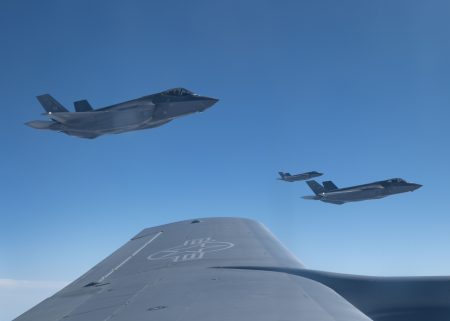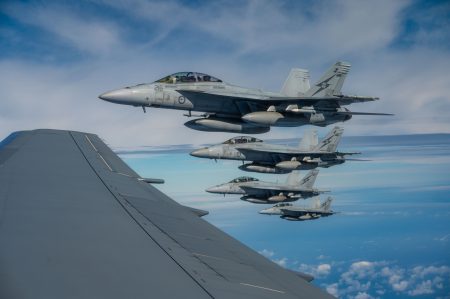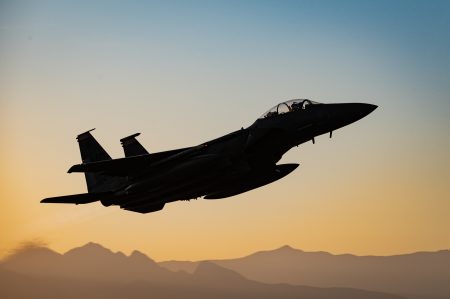“Bamboo Eagle,” the Air Force’s new advanced combat-readiness exercise, returned for its second year in recent weeks, featuring more than 175 aircraft and 10,000 personnel from four countries for the service’s latest large-scale exercise.
Like the three iterations in 2024, this edition of Bamboo Eagle took place following the conclusion of a Red Flag exercise, adding elements of multi-domain warfare and Agile Combat Employment on top of the service’s premier air dominance exercise.
The eight-day event, led by the Air Force Warfare Center, wrapped up Feb. 15, focusing on re-arming and refueling combat aircraft across austere, high-threat environments.
The aircraft involved included bombers, fighters, tankers, command and control platforms, and ISR drones, with participation from the U.S. Air Force, U.S. Marines, Royal Air Force (RAF), and Royal Australian Air Force (RAAF). The Royal Canadian Air Force (RCAF) also joined for the first time to provide command and control support.
Multiple B-2 Spirit bombers from Whiteman Air Force Base, Mo., and a B-52 Stratofortress from Barksdale Air Force Base, La., tested their integration with fighters and other aircraft in a coordinated operational environment, a spokesperson from Nellis Air Force Base told Air & Space Forces Magazine. The B-2s from the 393rd Expeditionary Bomb Squadron practiced long-range deep strike missions.
“From the perspective of the B-2, this exercise was a real test,” Lt. Col. Joseph Manglitz, 393rd Expeditionary Bomb Squadron commander, said in a release. “It’s one thing to train at home—and we train hard at home—but it’s even better to bring a subset of our base on the road here and work together to generate airpower alongside the rest of the combat air force and our allies.”
Aircraft Involved in Bamboo Eagle 25-1
- Bombers: B-2 Spirit and B-52 Stratofortress
- Fighters: F/A-18 Super Hornet, F-35 Lighting II A & B variants, F-16 Fighting Falcon, F-15E Strike Eagle, and the Typhoon FGR4.
- Mobility Aircraft: C-17 Globemaster III, C-130 Hercules, KC-46 Pegasus, KC-135 Stratotanker, and RAF Voyager
- Command and Control: E-3 Sentry and RAAF E-7 Wedgetail
- Search and Rescue: HH-60W Jolly Green II and HC-130J Combat King II
- ISR: MQ-9 Reaper and RC-135 Rivet Joint
- Electronic Warfare: EC-130H Compass Call and E/A-18 Growler
The spokesperson added that four different F-35 units took part in the exercise, including the Air Force’s 356th Fighter Squadron from Eielson Air Force Base, Alaska; the 421st Fighter Squadron from Hill Air Force Base, Utah; U.S. Marine Fighter Attack Squadron 211 from Marine Corps Air Station Yuma, Ariz.; and the RAAF’s 77 Squadron from RAAF Base Williamtown, New South Wales in Australia.
The exercise tested each unit’s integration with other platforms and provided F-35 pilots with a platform to sharpen their offensive and defensive counter-air skills, execute long-range Pacific flights, and escort assets while neutralizing surface-to-air threats.
“We’ve got pilots taking off, tasked with missions they weren’t expecting, for much longer than they were expecting, and landing somewhere they weren’t expecting,” said Lt. Col. Bryan Mussler, 421st Fighter Squadron commander, in a release. “The unpredictability built into this exercise gives us a realistic look at what the fight will be like.”
The RAAF deployed around 430 personnel and 18 aircraft for Red Flag and Bamboo Eagle. The contingent included F-35As, F/A-18F Super Hornets, EA-18G Growlers, and an E-7A Wedgetail. According to Group Captain Stewart Seeney, who led the RAAF contingent, this year marked the largest and most capable RAAF deployment to date.
“Exercise Bamboo Eagle … replicated the challenges of conducting long-range missions in the Indo-Pacific, including how we integrate aircraft and other systems across all domains,” said Seeney, highlighting that the exercise provided aviators with a “highly complex and realistic training opportunity.”
As part of the Agile Combat Employment concept, teams operated from hub-and-spoke locations across California, Hawaii, Guam, and more. Key resources were centralized at a hub, while smaller teams were deployed to spoke locations to operate with limited personnel and resources.
“Bamboo Eagle tested our ability to integrate the tactical effects we trained to in Red Flag from dispersed forces and under distributed command and control,” said RAF Gp. Capt. Guy Lefroy, U.K. detachment commander, in a release. “Throughout the exercise we developed our people’s ability to dynamically deliver airpower through empowerment, effective risk management and innovation, ultimately sharpening our individual, service and collective international capabilities to deliver battle-winning effects.
